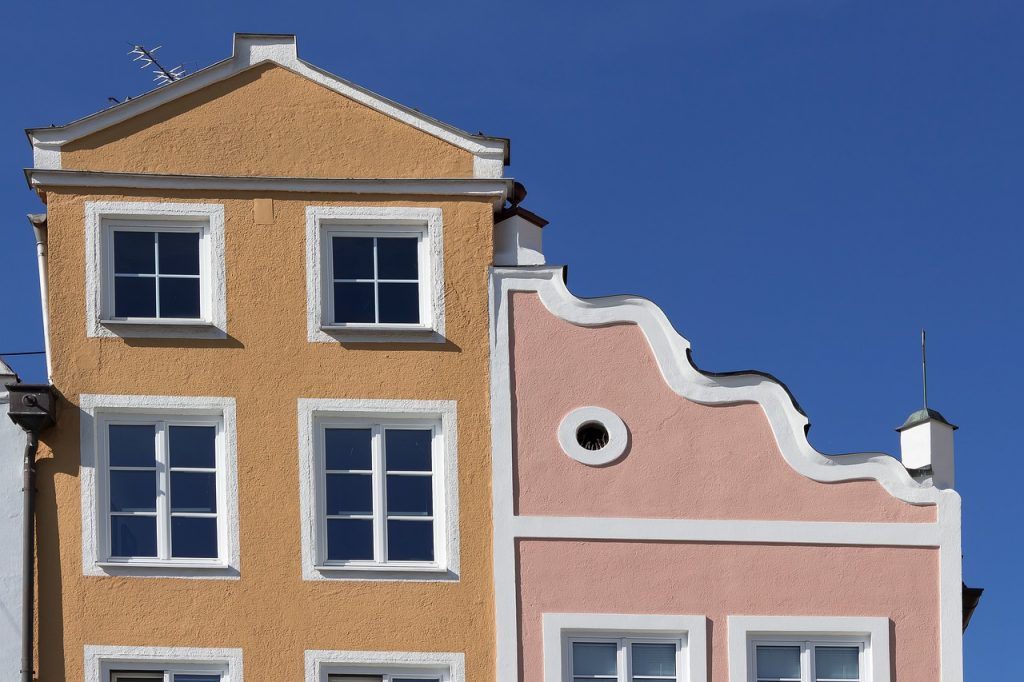Importance of House Rendering in Construction

Importance of House Rendering in Construction
Cladding is one of the essential layers of
your house because it offers insulation and protection from the elements. Think
of cladding as the skin of your house, the protective outer layer which
protects and improves your house’s appearance. There are many ways to clad your
house, including bricks,
weatherboarding, and vertical tiling,
but by far the most popular and common among them is render.
Rendering 101
By definition, rendering is the utilization of
cement to outer or inner brick or concrete walls in order to accomplish a soft
and deliberately textured facade. This process is also called solid
plastering, and it is normally carried
out by qualified craftsmen. It has been used in Europe for centuries. Rendering
works really well for an entire variety of house styles, and there are numerous
advantages coming from rendering a house,
from covering up unattractive elements of the facade to remodeling an
exterior as a portion of a renovation.
The Application of Render
The standard render formula includes the usage
of cement, sand, and water, with the recent addition of lime
thrown in a mix. The lime is here because it gives more elastic properties to
the render, which then becomes more enduring and less inclined to splitting
after it dries. After the render is mixed it is applied in thin, smooth layers
over the surface. depending on the preferable texture of the surface, render can be applied by using a trowel, a
brush, a hessian bag or a sponge. The modern versions
of render implement various modern materials, such as acrylic products,
minerals, polymer, and silicone.

Why Render?
There is plenty of reasons why rendering is
beneficial to your property, but it could be boiled down to two main
advantages. The first is the protecting aspect, as the cladding protects the
underlying walling element from the influences of climate and rainwater
invasion. The second one is aesthetically based, as cladding provides an
attractive appearance to the house. We will get more on that later. Even if you
live in a modern house you should consider rendering, because that’s an
investment that pays off momentarily and it will last for decades.
However, rendering is a pretty expensive
process, so it is advisable to consider if rendering is really necessary, not
only because it is quite costly to put on, but also to remove or replace. Even
if you opt for rendering, you have to choose between one of many rendering
types, as well as the insulation options.
Aesthetic of Rendering
If the outer walls are the skin of your house,
you may consider rendering a facelift. It is surprising to see how previously
unsightly buildings can shine after giving them a smooth reskin. Some 50 years
ago the favorite render was pebbledash, but from today’s point of view, it
looks dated and not very aesthetically pleasing, especially considering that
pebbles have a tendency to fall out, which not only made the walls look like a
measles victim but also left the outer walls vulnerable to elements. Luckily,
thanks to the new technology, it’s possible to undertake quick
rendering repairs, which completely remove and replace old and
worn-out layers of render with a new one. That is a good way to boost the
aesthetic and commercial worth of your residence.
Rendering Protection
Except for aesthetic values, the main merit of rendering is its protecting
properties.
The walls made exclusively of bricks have an
inclination to get damp, especially if they are bared to the elements over an
extended interval of time. Putting an outer layer to the walls keeps the water
from entering and prevents this form of damage to occur. This goes for older,
brick made residences, the newer ones solve the damp issues with a cavity
wall. Except for damp protection, the house rendering also provides
some heat insulation. The studies have shown that an average home loses one-third of its heat through uninsulated walls.
However, for the full effect, it’s advisable to undertake external solid wall
insulation. It is a bit more expensive, but there might be various grants that
are available for external insulation, so you might happen to spend less money
on rendering with insulation than you would on rendering alone.
Conclusion
There are multiple reasons why you should
provide your residence a render, most obvious being the improvement of your
home’s exterior. There’s a stark difference between a rendered and non-rendered
building, and there are multiple options of materials, colors, and level of
insulation you can choose from. Furthermore, rendering provides enhanced
protection against heat loss, water intrusion, and other outer effects. The
process requires some investment, but its effects are long-lasting and
considerably advantageous to your residence.
Comments are closed